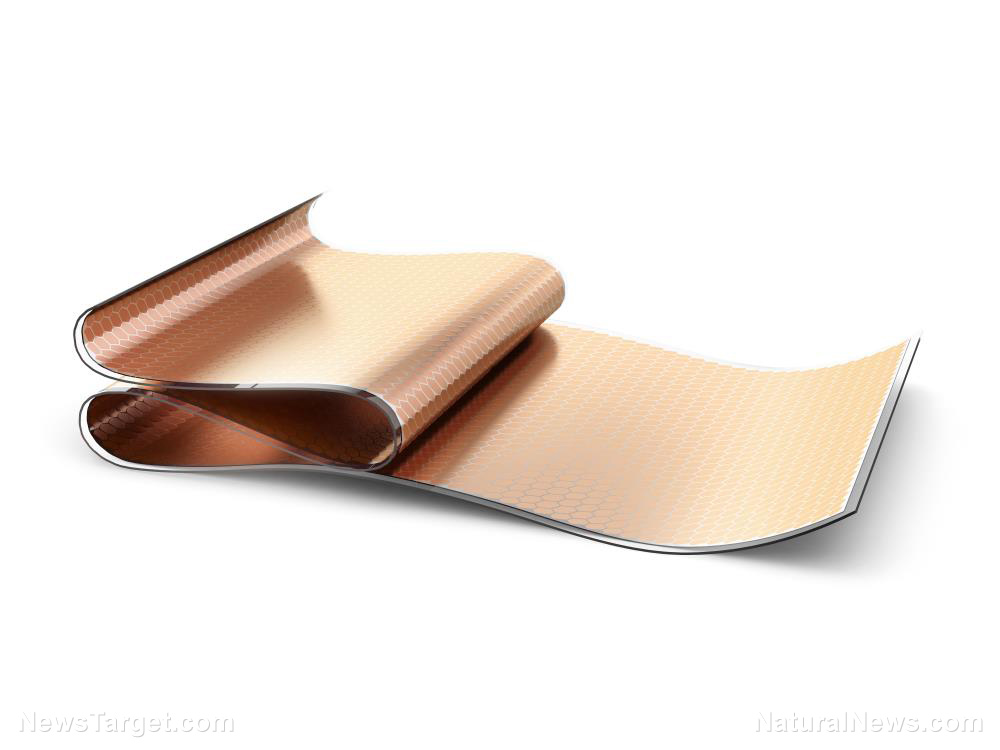The physics of chemistry has changed: Researchers have discovered how to use liquid metal as a material for electronics
03/05/2019 / By Rita Winters

Wearing your devices may now be possible, literally. A scientific discovery at the RMIT University in Australia paves the way for smaller and faster electronics and a different way to do chemistry. The researchers in the university found a way to artificially create thin oxide layers that are just a few atoms thin.
Fast fact: An oxide layer is a chemical compound that contains at least an atom of oxygen and another atom of any other element, which is commonly used for protecting an electronic material from corrosion.
Professor Kourosh Kalantar-zadeh and Dr. Torben Daeneke led the research experiment, involving students from the RMIT School of Engineering. Daeneke says they’ve found a simple and extraordinary way to create thin flakes of materials that do not exist naturally as layers, or as two-dimensional materials. They also say that non-scientists can do this by themselves in their own stove at home, since the method was as simple as foaming some milk for coffee.
In order to make atomically-thin oxide layers, they used non-toxic alloys like gallium, similar to aluminum, to cover the surface of the liquid metal with thin oxide layers of the added metal. They used this process to create artificial sheets of thin oxide layers instead of using the naturally-occurring gallium oxide, which is rather thick. If one wanted to create larger quantities of the thin layers, one could produce it by injecting air into the liquid metal.
The resulting extra thin oxide layer is easily exfoliated or removed by touching the metal with a smooth surface. This research was inspired by graphene, a naturally-occurring two dimensional material, which is a thin, extra strong, transparent material conductor. Some uses of the 2D graphene are: filtering membranes for liquid and gasses; increasing the lifespan of a regular lithium battery; biomedical delivery systems, sensors and tissue engineering; and wearable technology.
This wonderful breakthrough is important in the gadget world since thinner oxide layers mean the electronic device would need less power in order to run. These oxide layers can be used as a transistor or a semiconductor that amplifies or switches electronic signals and electrical power in gadgets that have touch screens, or smartphones, in general. (Related: Flexible, eco-friendly AND less expensive: Researchers are one step closer to the smart screen of the future.)
The developed technology applies to at least one-third of the periodic table, and given that semiconducting and dielectric components are the roots of electronic gadgets, this is a pretty huge once-in-a-decade discovery.
This research proves useful for future technologies, since these super thin oxide materials were not previously seen in regular electronics. Researchers say that this would create wonders in the realm of electronic devices.
The implications of this scientific breakthrough could mean smaller electronic components and thinner devices, like a nano LED. Other applications to technology would be thinner smartphones, efficient flat-screen televisions, and small medical devices that could help in minimally invasive surgical procedures, especially in delicate body parts like the brain.
Other applications of two-dimensional materials would include wearable “smart” clothing. If you’ve seen Justin Timberlake in the movie In Time (2011) or Kate Beckinsale in Total Recall (2012) then you would have seen the electronic devices implanted on their arms. Imagine literally wearing your watch or your mobile phone on your hand without the pain of having to implant anything.
Sources include:
Tagged Under: breakthrough, future tech, goodtech, Graphene, liquid metal, new electronics, oxide layers, science and technology, wearable technology




















